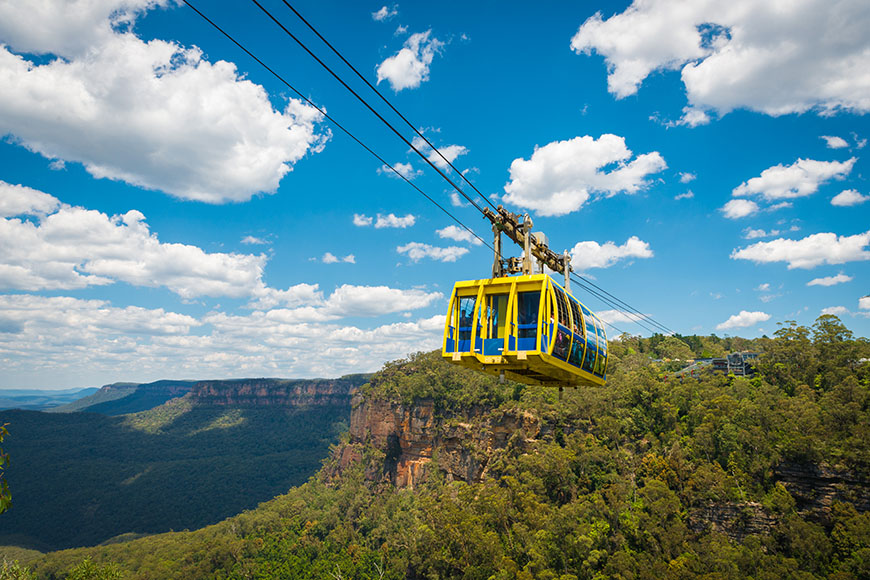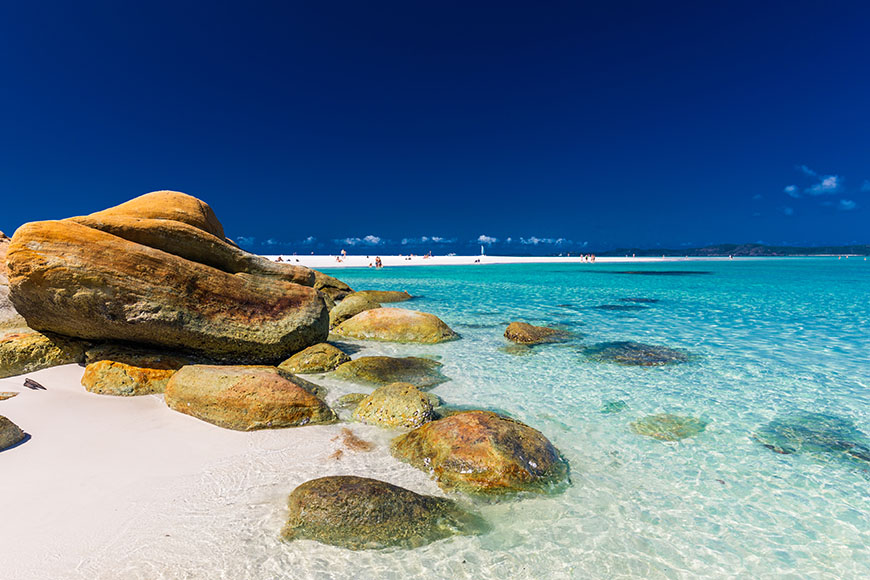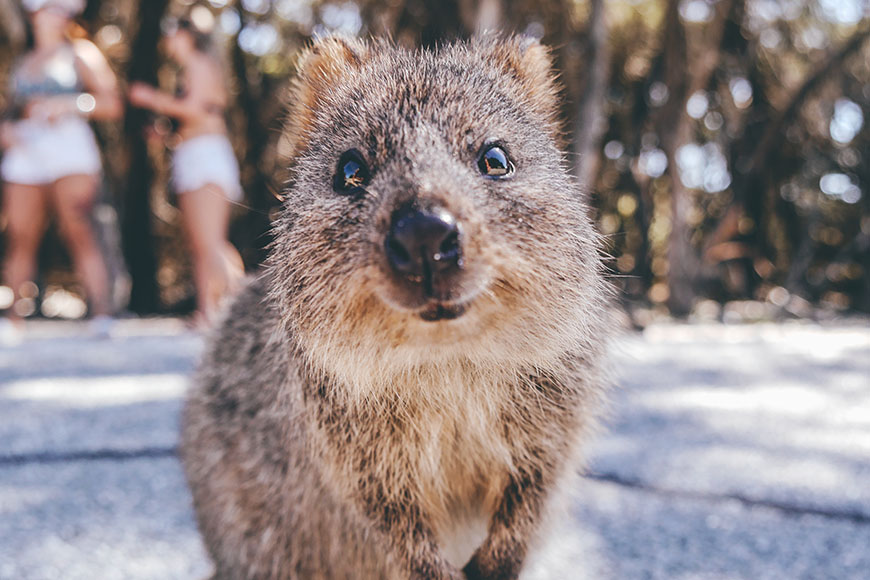Following months of apocalyptic images—billowing smoke, suffering animals, orange flames licking at a blood-red sky—the Australia fires that made headlines around the globe are finally under control. Though bushfires are a natural part of Australia’s ecosystem, this year’s summer fire season was particularly hot and dry, with grim consequences: More than 30 people died and some 27 million acres burned across the country.
It’s enough to scare any would-be tourist off a visit Down Under—but don’t take Australia off your list just yet. Though the damage was very real, Australia is a huge country, and the majority of popular tourist attractions were unaffected by the fires. You can still do most of the things you likely want to do on your Australia vacation—like climbing the Sydney Harbour Bridge, snorkeling along the Great Barrier Reef, or hiking in Blue Mountains National Park—and visiting the country this year can actually contribute to disaster recovery by supporting the local economy.
Below are answers to a few frequently asked questions about Australia travel this year to help you decide whether you’re ready to plan a trip.
Are the Australian Fires Still Burning?
Although regional firefighting agencies report the occasional small bushfire, there were no vast or uncontrolled blazes anywhere in Australia at the time of publication.
Which Areas Were Affected by the Australia Fires?

The southeastern part of the country saw the worst damage, including parts of New South Wales, Victoria, and Southern Australia. About half of Kangaroo Island burned, causing the destruction of homes, farmland, and the renowned Southern Ocean Lodge (the owners plan to rebuild). Adelaide Hills, a region near the city of Adelaide known for food and wine, and a number of coastal towns between Melbourne and Sydney (such as Mallacoota) also saw significant damage.
Parts of the Blue Mountains, a popular national park not far from Sydney, had to close intermittently due to fires, but major visitor hot spots such as Scenic World were not affected. Sydney, Melbourne, and Canberra were at times subject to smoke from bushfires, but the air is clear now.
Many of the fires were in rural areas rarely visited by international tourists. You can see a current map of the fire impact on the Tourism Australia website.
Despite the damage, many of the regions impacted by the fires have started to bounce back and are welcoming visitors. For example, Kangaroo Island’s tour operators have adjusted their itineraries to take visitors to unaffected parts of the island, where you can still see the distinctive wildlife for which the island is known.
Where in Australia Can I Travel in 2020?
The vast majority of Australia is open to visitors in 2020, but here’s a sample of appealing spots that were undamaged by the recent fires and are worth adding to your itinerary.
Sydney
No first-time visitor to Australia should miss a stop in Sydney, with its iconic landmarks, golden sand beaches, diverse cuisine, and world-class museums.
Whitsunday Islands

In a country ringed by Insta-worthy beaches, this cluster of islands off the coast of Queensland offers some of the best—along with access to the Great Barrier Reef and plenty of outdoor adventures like sailing and sky diving.
Uluru
The Northern Territory’s most famous landmark, part of Uluru-Kata Tjuta National Park, is open as usual for tours, walks, cultural experiences, and sunrise and sunset viewings.
Tasmania
Australia’s island state saw only very minor bushfires this year and is a popular draw for hikers and nature lovers. To learn more, see Getting Back to Nature in Tasmania, Australia.
Great Ocean Road
Though other parts of Victoria saw some fire damage, this famed coastal drive and its nearby attractions are open and make for a memorable road trip.
Rottnest Island

Known for its unique wildlife (especially the adorable quokka) and pristine sandy beaches, this island is located off the coast of Western Australia, accessible via a ferry ride from Perth.
Why Should I Travel to Australia This Year?
The tourism industry employs one out of every 12 Australians, so by vacationing here you’re helping to support the economy during the bushfire recovery.
As a bonus, there are some pretty great deals available right now. Ricky Radka, an airfare analyst at Airfarewatchdog, SmarterTravel’s sister site, says he’s seen a number of recent sales on flights to Australia from airlines such as Air New Zealand, Qantas, Fiji Airways, and even Air Canada. “Finding sub-$1,000 round-trip fares [from the U.S. to Australia] is fairly common now,” says Radka, attributing it to “better connections, newer planes, lower costs, and increased long-haul competition” over the past few years.
Depending on where you’re traveling, you can also find savings on lodging, tours, and experiences. Kangaroo Island, New South Wales, and Melbourne are among the destinations advertising deals right now.
How Can I Protect My Trip from Future Australian Bushfires?
While the future is impossible to predict, Australia’s bushfire season typically runs throughout the Southern Hemisphere’s summer months (December through March), so planning a trip outside of this time period is one way to protect your vacation. This comes with secondary benefits as well: Wildlife is often more active when temperatures are slightly cooler, and you’ll likely pay a little less for airfare and accommodations since you’ll be traveling outside of the peak summer season.
No matter when you decide to visit, consider purchasing travel insurance, which generally will reimburse you if you need to change your plans due to natural disasters. (Buy early, though—if you purchase a policy after fires have started, you likely won’t be covered for any losses due to a preexisting incident.)
How Can I Help with Australia Fire Recovery?

Besides planning a vacation to Australia, you can support the country’s recovery with donations of money or time. Australian Wildlife Journeys is offering a handful of recovery-focused itineraries that allow visitors to plant trees for koala habitat, help with weed control, and carry out biodiversity surveys. Echidna Walkabout is offering a koala recovery tour in Victoria with departure dates in July and August 2020. You can find other volunteer opportunities here.
Note also that the Australian government has changed its visa rules to allow backpackers and others on working holiday visas to stay 12 months rather than six if they’re helping with bushfire recovery efforts.
In lieu of volunteering, you can make a monetary donation to the following organizations:
- Australian Red Cross
- WIRES (wildlife rescue)
- New South Wales Government
- Victoria Country Fire Authority
- South Australian Country Fire Service
More from SmarterTravel:
- What to Pack for Australia: 35 Essentials
- 12 Underrated Beach Towns in Australia
- Top 25 Ways to Save on Australia Travel
Follow Sarah Schlichter on Twitter @TravelEditor for more travel tips and inspiration.
We hand-pick everything we recommend and select items through testing and reviews. Some products are sent to us free of charge with no incentive to offer a favorable review. We offer our unbiased opinions and do not accept compensation to review products. All items are in stock and prices are accurate at the time of publication. If you buy something through our links, we may earn a commission.
Related
Top Fares From
Today's Top Travel Deals
Brought to you by ShermansTravel
Shop and Save with Country Inns...
Patricia Magaña
 Hotel & Lodging Deals
Hotel & Lodging Deals
$229 -- Chicago: Discounted Rates and...
Francesca Miele
 Hotel & Lodging Deals
$229+
Hotel & Lodging Deals
$229+
$188 -- Honolulu: Save on Oceanview...
Abigail Lamay
 Hotel & Lodging Deals
$188+
Hotel & Lodging Deals
$188+




